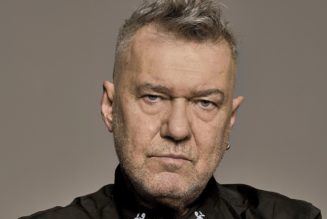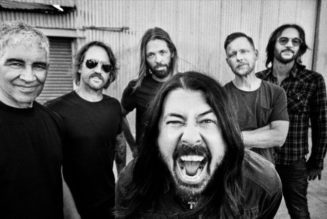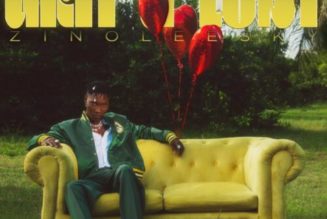
In this tiny, symbolic bar in New York City, he celebrated another muse for the project: the vacations he spent on the west coast of Puerto Rico as a kid. The album’s gratifying transitions illustrate a summer in el caribe—what it feels like to be on those beaches, the colloquial phrases and dialects of the Spanish-language Caribbean. The sound of seagulls in the track-to-track transition between “Agosto” and “Callaita” perfectly evokes the texture and atmosphere of the beach. With dazzling eclecticism, Bad Bunny touches on nu-disco, psychedelia, electro-pop, and house on reggaetón-based songs like “Party” with Rauw Alejandro, “Tarot” featuring Jhay Cortez, and one of its most political tracks, “El Apagón.” The second half brings a wealth of unexpected collaborations: On “Ojitos Lindos” and “Otro Atardecer,” respectively, Colombian cumbia-electro group Bomba Estéreo and indie-pop band the Marías adapt seamlessly into the project’s world.
The B-side also serves as a melodic discourse on Puerto Rican livelihood. Puerto Rican duo Buscabulla joins for “Andrea,” an indie-pop song that touches on femicide and gender violence. “El Apagón” (“The Blackout”) is a middle finger to those privatizing the island’s electrical grid and beaches, furthering the displacement and gentrification of communities in Puerto Rico, the world’s oldest colony. “Que se vayan ellos/Lo que me pertenece a mí/Se lo quedan ellos” (Let them go/What belongs to me/They’ll keep it for themselves), sings Bad Bunny’s girlfriend, Gabriela Berlingeri, in the outro. “Esta es mi tierra” (This is my land). The song’s beginning rhythm is the pulse of bomba, a genre birthed by enslaved Africans to preserve tradition that today symbolizes resistance and liberation.
The truth is: perreo, whining the waist, and shaking ass are all forms of protest and expression, and activated equally throughout the album. While the B-side feels designed for whining down and deep thinking, the A-side sets the tone for teteos, cookouts, and beach parties, keeping reggaetón culture at the forefront with appearances from native legends like Tony Dize on “La Corriente” and Plan B’s Chencho Corleone on “Me Porto Bonito.” A major part of the production influences belong to the Dominican Republic, though actual Dominican artists are conspicuously absent. “Después de la Playa,” which opens with synths that transition to a Dominican mambo a little over a minute in, is one of the only songs to credit a Dominican artist by name: Against a foundation of guira, tambora, and piano, you hear, “I’m here with el Apechao”—a reference to Dahian el Apechao, an instrumentalist, singer, and composer with an impressive history of collaboration with mambo and reggaetón artists alike. The lack of visible representation for more Black Dominican artists on an album so indebted to their influence feels like a missed opportunity.
[flexi-common-toolbar] [flexi-form class=”flexi_form_style” title=”Submit to Flexi” name=”my_form” ajax=”true”][flexi-form-tag type=”post_title” class=”fl-input” title=”Title” value=”” required=”true”][flexi-form-tag type=”category” title=”Select category”][flexi-form-tag type=”tag” title=”Insert tag”][flexi-form-tag type=”article” class=”fl-textarea” title=”Description” ][flexi-form-tag type=”file” title=”Select file” required=”true”][flexi-form-tag type=”submit” name=”submit” value=”Submit Now”] [/flexi-form]










Tagged: Alternative Music, music blog